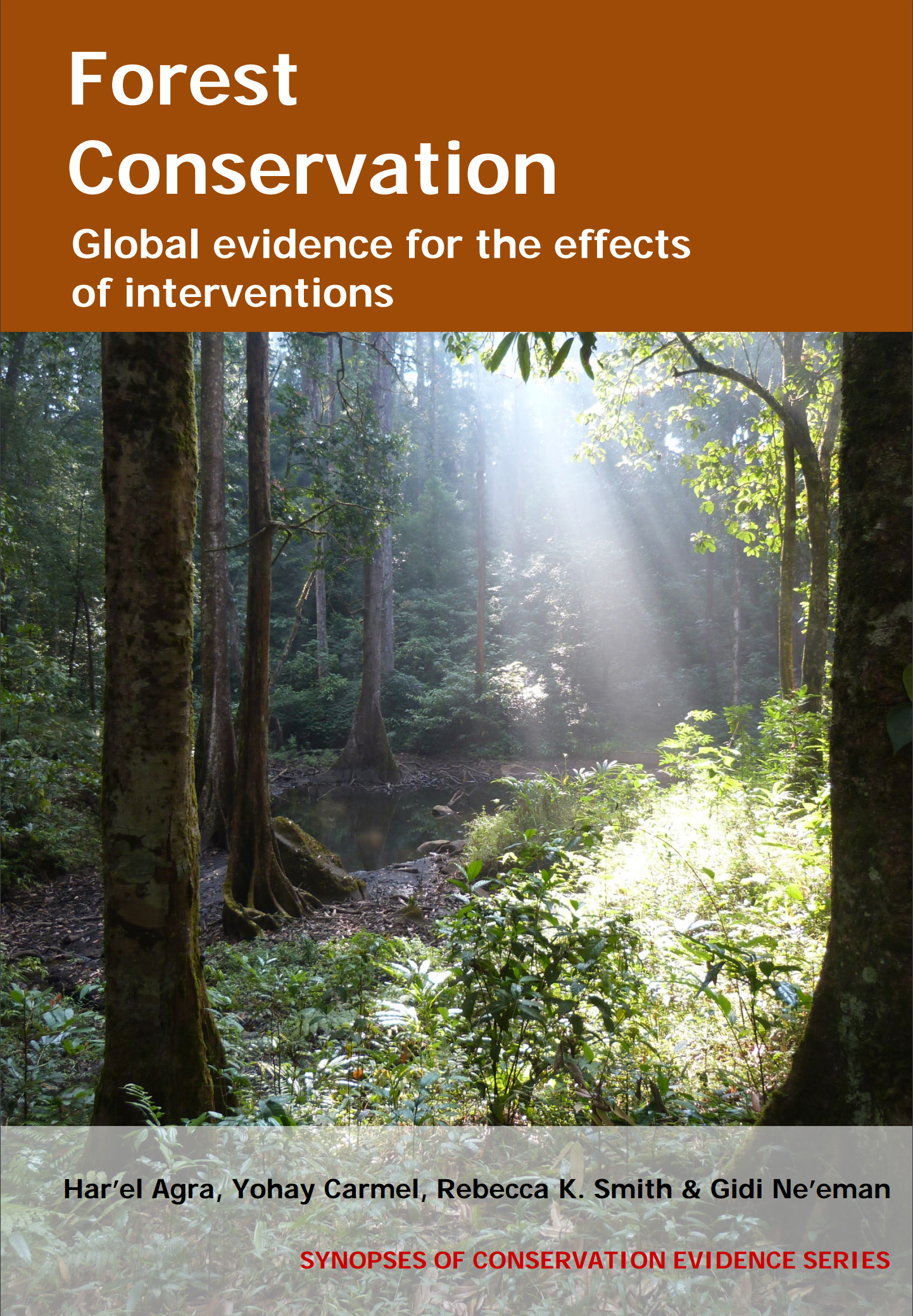Log/remove trees within forests: effects on young trees
-
Overall effectiveness category Unknown effectiveness (limited evidence)
-
Number of studies: 2
View assessment score
Hide assessment score
How is the evidence assessed?
-
Effectiveness
50% -
Certainty
18% -
Harms
10%
Study locations
Supporting evidence from individual studies
A replicated, controlled study in 1992-2001 in boreal forest in Ontario, Canada (Bebber et al. 2005) found that structural retention harvest increased tree sapling density. Average sapling density increased from 4,178 to 5,109 saplings/ha in harvested compared with unharvested plots. Harvesting was carried out in 1992. Remaining trees were healthy seed bearers and declining quality trees. Six unharvested control plots and 12 harvested plots, spread over an area of approximately 1,200 ha were monitored during August and September 2001. Plot areas varied from 3 to 104 ha (average 26 ha). Fifty five sample points were placed within control plots and 89 within harvested plots (3–20 points/plot). Tree saplings were recorded inside a 5 m radius ring around plot centre.
Study and other actions testedA replicated, controlled study in 1997-2002 in tropical rain forest in Costa Rica (Lobo et al. 2007) found that selective logging decreased the density of seedlings and small juvenile trees but increased the number of larger trees. For Caryocar costaricense, the density (individuals/ha) of seedlings (<50 cm tall) (logged: 3.1; unlogged: 4.5) and small juveniles (<2 cm diameter at breast height) (logged: 5.2; unlogged: 8.0) was higher in unlogged plots. In contrast, the density of large juveniles (2-10 cm diameter at breast height) was higher in logged plots (logged: 4.3; unlogged: 2.4). For purpleheart Peltogyne purpurea, the density of seedlings (logged: 208.8; unlogged: 511.2) was higher in unlogged plots, while the density did not differe for small (logged: 2.2; unlogged: 3.1) and large juveniles (logged: 2.6; unlogged: 2.2). Data were collected in 2002 in three logged (selective logging in 1997-1998) and three unlogged plots (100 × 30 m) in each of 11 sites.
Study and other actions tested
Where has this evidence come from?
List of journals searched by synopsis
All the journals searched for all synopses
This Action forms part of the Action Synopsis:
Forest Conservation
Forest Conservation - Published 2016
Forest synopsis





)_2023.JPG)














